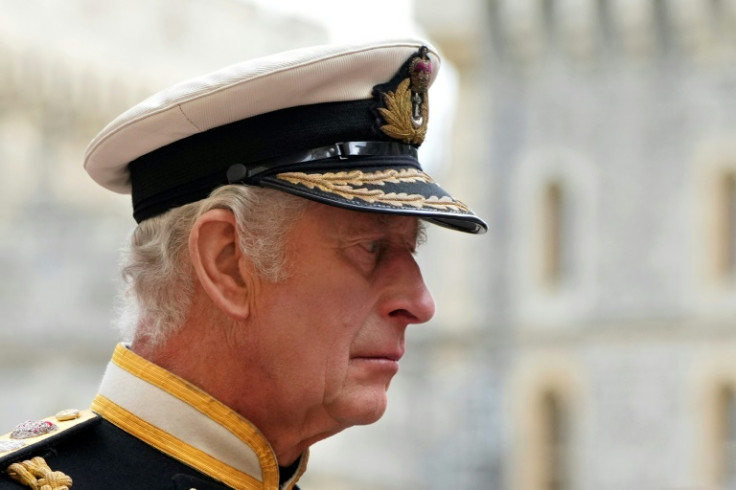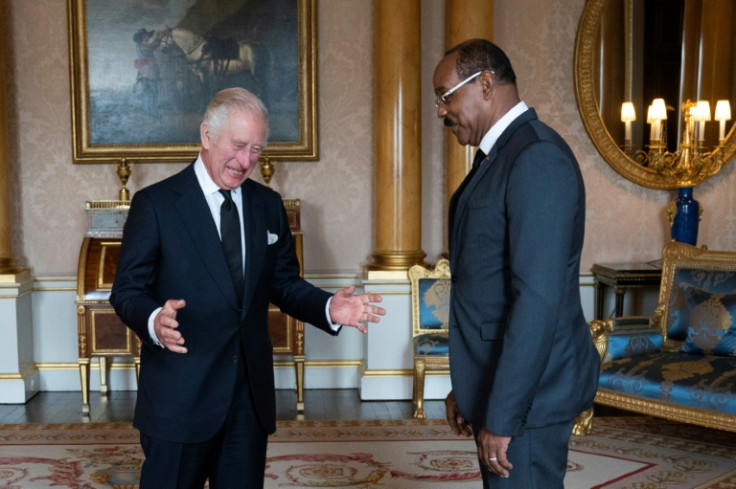King Charles Debuts New Royal Cypher That Will Soon Replace Queen Elizabeth's Insignia

KEY POINTS
- Buckingham Palace revealed King Charles' new cypher, which will be used as postmarks on all mail from the palace starting Tuesday
- The new emblem features King Charles' initial "C," intertwined with "R" for "rex" and "III" inside the "R"
- King Charles' cypher in Scotland is slightly different as it is modified to show the Scottish crown
King Charles III's new royal cypher has been unveiled, and it will soon replace his late mother Queen Elizabeth II's insignia on all documents, items and buildings where royal symbols are shown.
Buckingham Palace revealed the new monarch's royal cypher Monday as Charles began his third full week as head of state.
The King's cypher is a monogram consisting of his first name initial, "C," and his title initial, "R" — which stands for "rex" (Latin for king, traditionally used for the monarch dating back to the 12th century), People reported. It also features a representation of the crown above "C" and "III" inside the "R."
The cypher, a visual identity for the new reign, replaces the "E II R" insignia of Queen Elizabeth II, who died on Sept. 8.
The replacement will be a gradual process, but palace officials said the postmarks on all mail leaving Buckingham Palace will begin Tuesday, according to People.
The cypher will also be seen on state documents and the red mailboxes around the United Kingdom, as well as used by U.K. government departments on their mail. It is also used on items like uniforms, coins, stamps and passports, according to Today.
The cypher is the personal property of the new King. It was personally chosen by King Charles from several designs produced by the palace's heraldry experts, the College of Arms.
Before the unveiling of the new emblem, King Charles had already adapted a new signature reflecting his new status as the sovereign. He signs his name as "Charles R" on official documents. He also used the signature on the note he left on top of Queen Elizabeth's coffin during her funeral on Sept. 19.
The late Queen used "Elizabeth R" for official communications. When used by queens, the "R" stands for "regina," or "queen" in Latin.
King Charles has a different insignia in Scotland, where he is currently staying. The design has a minor modification depicting the Scottish Crown.
When King Charles ascended to the throne, he hit the ground running while mourning the passing of his mother.
According to journalist and biographer Catherine Mayer, author of the book "Charles: The Heart of a King," which was recently updated, the British people support their new monarch.
"It's been interesting because he's been clearly buoyed and moved by the public support for him," Mayer told People. "I know him well enough to know he'd be surprised by that. He always expects to be the one who disappoints. But the excitement has lifted him."
Mayer added that there have been "signs of dissent" on some outings and that King Charles' character has divided people at times. His viral pen incidents, in particular, "divided interestingly along demographic lines but not what you'd expect," the journalist claimed.
The younger generation liked them because they saw his irritability amid extreme stress as "humanizing and authentic," according to Mayer, but it drew criticism among the older crowd who believed that "it wasn't what the Queen would have done."
"He's a very engaging and funny and warm but absolute peevish when things don't go his way. We got glimpses of that," she told People of the King's character.

© Copyright IBTimes 2024. All rights reserved.






















